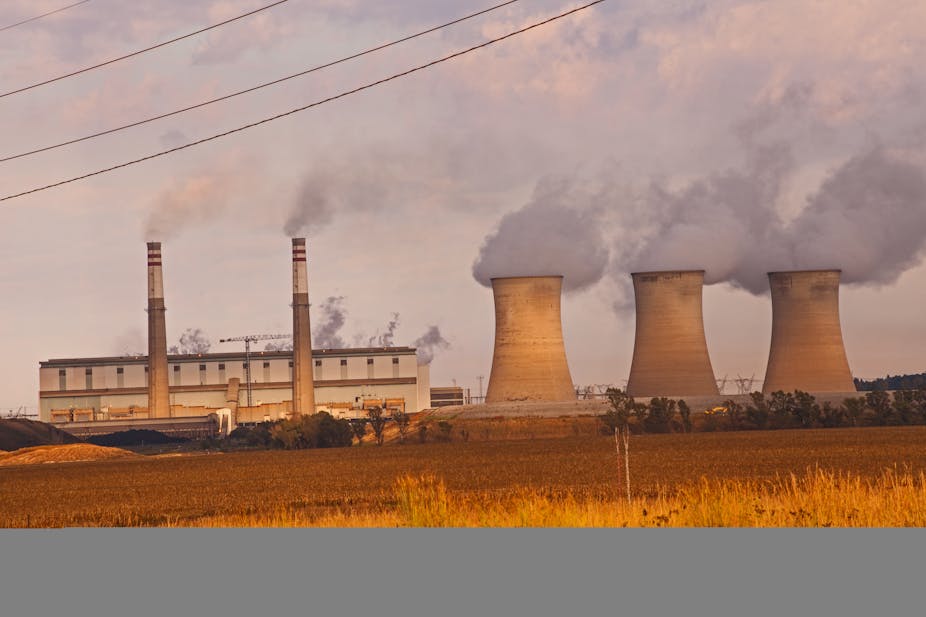The furore over the carbon tax in South Africa that is playing itself out both in public and behind closed doors is leading to an impasse. General responses to the carbon tax have tended to be overly dramatic. For example, major emitters and users of fossil fuels say it will abruptly kill their businesses. Those in favour believe that it will lower our dependence on fossil fuels and hold economic benefits in the future.
These views have come to the fore in submissions by various stakeholders to the Davis Commission, which is reviewing the general tax system in the country. Industry has made its position clear: it does not want a carbon tax and probably never will.
However, certain parts of government, like the National Treasury, alternative energy producers and environmentalists see the importance of the carbon tax as a way of pricing an environmental externality.
South Africa has a structural issue when it comes to electricity production. The country is totally dependent on a single producer of electricity, state-owned Eskom, which derives 90% of its electricity from coal.
Some sensible approaches
There are positives and negatives that should be acknowledged.
If the carbon tax is used as a blunt instrument it will most likely do more harm than good. There are mitigation strategies.
In the first phase of implementation there could be a low-level of the tax and - given all the exemptions that are being offered, including offsets - the carbon tax’s effect would be small.
A carbon tax with revenue recycling is also possibly a better option. A carbon tax purely imposes penalties and is unlikely to win over firms and consumers. Revenue recycling allows carbon taxes to be used to either support technology shifts or cushion those who are likely to be most affected.
Some industries are likely to adjust better than others as some industries can easily adjust to new technologies or optimise their systems. Others will find it harder as investments in existing technology may still be at the start or in the middle of their full utilisation lifespan.
The effect of costs which have already been incurred in an asset that is already locked in the production system will make it expensive to switch to another technology without losing competitiveness. In highly competitive industries the switch over to cleaner technologies cannot happen without some assistance. It is simply not true to suggest that all industries and and consumers will be affected alike.
It makes more sense to upwardly adjust carbon pricing measures with improvements in implementation performance as more low carbon technologies or energy carriers are introduced into the grid system. This should be also accompanied by developing the ability of consumers to participate in distributed generation. Such flexibility makes it easier to switch to cleaner energy sources.
Why timing matters
The carbon tax has the danger of being viewed as another form of tax. In addition, South Africa already has a sort of carbon tax in the electricity levy. The levy is an environmental levy; it is a price put on emissions that come from using coal to generate electricity.
It is probably not a good idea to introduce new forms of levies and taxes during periods of slow growth. Generosity towards contributing more taxes and levies tends to be constrained across the board and not just with large firms at such times. The South African economy has only averaged a growth rate of 3.1% from 2000-2014 over the past five years and more. The country is in an economic cycle that needs counter-cyclical spending where government has to lead fiscal spending to boost economic growth.
International obligations
South Africa has international obligations to deal with its high emissions profile. A carbon tax or pricing would not only signal the country’s commitment but also that it is mobilising domestic resources to reduce carbon emissions.
The country should also make every effort in securing long-term sources of climate finance from the international community. International climate finance is available to support scaling cleaner energy solutions.
South Africa should work in anticipation of a move by the world’s major economies and its key trading partners to introduce some form of international carbon pricing regime. It is reasonable to assume this is several years away.
South Africa, like other countries, would take a long time to adjust to new conditions. The proposed carbon tax’s aim is to allow systemic adaptation to this eventuality within the global trading scene. Failure to abide by any new global regime would lead to the country facing penalties, in the same way that airlines are already being threatened with the European Union’s emission taxes for air travel.
Pragmatism should prevail
The aim of a carbon tax is to disincentive future carbon intense investments. It will also encourage the investment world to start pricing this as a risk factor in the way they make future investment decisions and capital allocations. A new class of climate friendly investment opportunities would grow with time and this is good for economic diversification.
The priorities for South Africa should be:
The current electricity levy should be converted to a carbon tax as it is already in place. The conversion of the levy into an emissions or carbon tax is at least a way of establishing a long term carbon price and will start giving some level of certainty to various economic agents that they need to absorb once the grace period is over.
Some time should be given for adjustments to the introduction of the tax.
The focus must be put on reviving the economy and changing the energy mix both at utility scale and at the distributed level to allow consumers to switch to other energy sources.
And finally, carbon tax should be more closely aligned with the implementation of an integrated resource plan that diversifies the energy mix in such a way that our carbon intensity declines over time.
Manisha Gulati, an energy economist, at WWF-SA contributed to the article.

